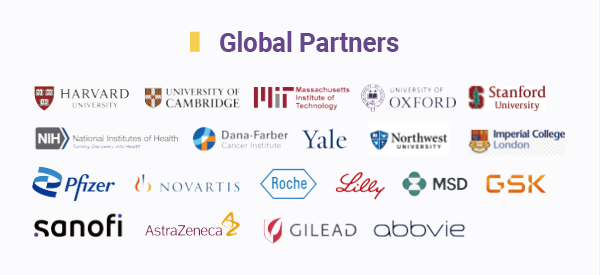
|
| Cell and Gene Therapy (CGT) |
With advancements in science and technology, the demand for precision in disease treatment is growing. Cell and Gene Therapies (CGT) were developed from years of research in life science. They use a wide range of molecular techniques to manipulate gene expression and cell behavior for tackling various disease mechanisms. Small molecules have become essential and versatile tools in cell and gene therapy (CGT). Thanks to their size, specificity, and versatility, they are used to modulate gene expression and function, facilitate gene editing, and direct stem cell reprogramming and differentiation. They enhance the efficiency of gene
delivery, both viral and non-viral, and improve the efficacy of cell therapies like CAR-T treatments by boosting cell proliferation, survival, and activity. Furthermore, small molecules offer significant advantages in safety and controllability, as their effects can often be reversed, unlike permanent genetic modifications. This makes them invaluable for developing more effective, and safer CGT approaches, addressing the complex challenges of modulating biological processes at the genetic and cellular levels. |
|
| Small Molecule Compounds in Stem Cell Maintenance |
Key pathways for maintaining stemness and self-renewal in human and mouse embryonic stem cells include the Wnt, MAPK/ERK, pI3k-Akt, and GSK-3 signaling pathway[2]. CHIR99021, a classic small molecule compound and a highly selective GSK-3α/β inhibitor, maintains the self-renewal and undifferentiated state of embryonic stem cells by activating the expression of eukaryotic linking proteins and drought-related genes.
CHIR99021, along with other inhibitors, have become essential tools for maintaining embryonic stem cell homeostasis[3]. |
| Small Molecule Compounds in Somatic Cell Reprogramming |
According to reports, small molecules involved in metabolic regulation can directly alter DNA or histone modification levels, affecting reprogramming. For instance,
the PDK1/PI3K/Akt agonist PS48 and HIF signaling pathway activator Quercetin
play significant roles in somatic reprogramming via the human single factor Oct4[4]. Moreover, mesenchymal to epithelial transition (MET) is reported to enhance somatic reprogramming, whereas TGF-β inhibition facilitates this process. Classic TGF-β receptor kinase inhibitors, such as SB-431542, E-616452 (RepSox),
and A-83-01, are used for the reprogramming of mouse and human somatic cells[5]. Compounds that maintain stem cell self-renewal can also facilitate somatic cell reprogramming, with GSK-3β and ROCK (Y-27632) inhibitors improving induction efficiency[2]. |
|
| Small Molecules in Osteogenic Differentiation of Stem Cells |
| Osteogenic small molecules play a role in promoting osteogenic differentiation of stem cells by activating known signaling pathways related to osteogenesis. These pathways include BMP/Smad, Wnt, and Hedgehog, and auxiliary pathways such as estrogen signaling and neuropeptide signaling. By modulating these pathways, small molecules can promote the differentiation of stem cells into osteoblasts, the cells responsible for new bone formation. For example, statins and adenosine receptor agonists are used in bone-related diseases[6]. |
| Others |
Small molecule compounds are also crucial for ex vivo expansion of hematopoietic stem cells (HSC). Over the past two decades, in vitro HSC amplification using
small molecules has been an effective method for obtaining sufficient HSC[7]. In addition, small molecule compounds enhance CAR-T cell therapy for hematological malignancies by activating CAR-T cells and delaying their depletion[8],
and supporting cell adhesion and migration in regenerative medicine[9]. |
|
| MedChemExpress — Master of Bioactive Molecules |
| MCE offers GMP grade small molecules for CGT applications, including stem cell reprogramming, differentiation induction, proliferation, expansion, stemness maintenance, and transdifferentiation. These molecules also include supporting CAR-T therapy development by activating cells and mitigating depletion. |
 |
| The GMP small molecule of MCE has the following features: |
| • |
High purity, and batch-to-batch consistency |
| • |
Kilogram-level production capabilities |
| • |
Short lead times |
| • |
Provide additional services, materials for each stage of drug declaration, and on-site audit support |
| • |
High consistency of sources, scale and standardization, minimizing clinical late stage conversion costs |
|
Each batch of MCE’s GMP small molecules undergoes strict quality control, and the system has passed the EU QP on-site audit.
The release testing items formulated include but are not limited to purity, moisture, microbiology, internal toxicity, and residual solvents. |
| The partial GMP small molecule list is as follows: |
|
|
Prostaglandin E2 An inflammatory mediator Developing
https://www.medchemexpress.com/prostaglandin-e2-gmp.html |
And MCE also has 2,000+
CGT related research level small molecules
and CGT related compound libraries (Differentiation Inducing Compound Library and
Stem Cell Signaling Compound Library) |
References:  |
[1] Cell stem cell 23.1 (2018): 31-45.
[2] Stem Cell Reviews and Reports 16 (2020): 511-523.
[3] Nature 453.7194 (2008): 519-523.
[4] Cell stem cell 7.6 (2010): 651-655.
[5] Current biology 19.20 (2009): 1718-1723.
[6] Stem Cell Research & Therapy 13.1 (2022): 1-22.
[7] Acta Pharmaceutica Sinica B 12.6 (2022): 2808-2831.
[8] Current Treatment Options in Oncology 24.3 (2023): 184-211.
[9] Biomedicines 11.9 (2023): 2507. |
 |

|
Request Your Quote |